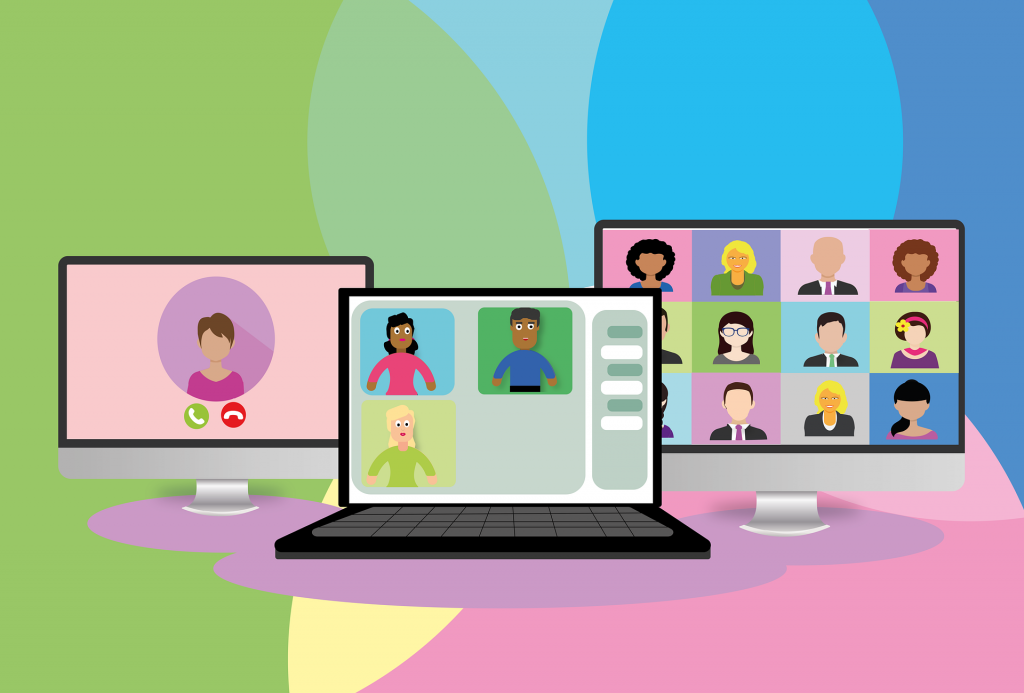Since 2005, remote work has grown by 173%, which is 11% faster than the rest of the workforce. More than a half of the workforce holds a job that can partially be done from home, and employers are increasingly allowing it, especially now with the unwavering spread of the COVID-19 virus. Apart from reducing health risks, working remotely has decreased turnover, decreased absenteeism, increased productivity, and saved money.

Remote workers have different needs from office workers. They need to have the proper office set-up within the confines of their homes for them to perform their jobs. They need tools that enable them to know when they are expected to be available virtually and communicate with their colleagues since they are incapable of physically asking for any assistance.
Since their employee experience is distinct, they will need unique programs to support them, and that begins with having a strong employee onboarding program. GoCo is an excellent example of a website that offers a guide to employee onboarding. View the website to get access to a comprehensive guide to remote onboarding.
What Is The Importance of Remote Employee Onboarding

To build a cohesive, productive, and engaged workforce, you must establish a robust onboarding process. An analysis by Gallup indicates that out of all of the employees in today’s workforce, only 12% employees strongly agree that their organizations do a great job onboarding new employees.
According to SHRM, in the first 18 months of employment, employee turnover can be 50%. Onboarding plays a significant role in engaging and retaining employees for the long run by setting up employees for success from day one through:
- Integrating employees into a company and team culture
- Introducing employees to team leaders and members
- Clarifying benefits and policies
- Connecting employees to contacts and mentors
- Communicating responsibilities and expectations
The onboarding process is even more critical for remote employees since they do not have the luxury of observing the office culture or building relationships organically in person. This means that in addition to your onboarding process setting them up to do their work, it should also make them feel connected to the broader company and their team from afar. By helping employees orient to their new remote work environment, you can ensure they have the information and tools they need to be integrated members of the team and successful in their job.
What Tips Should You Consider For Onboarding Remote Employees
Make Virtual Introductions
Unlike in an office setting whereby you would take your new hire around the office and introduce them to the leaders and teams, they will be working with; you might have a mentor set up a team-building activity during a break or invite them to lunch with the group since these interactions are essential for integrating remote employees. You can plan a virtual coffee break or happy hour during the first week and set up introductory calls with teams and leaders to help new employees get to know their coworkers in a casual setting. Assisting new hires to build relationships from day one is key to establishing a foundation for long-term success in your company.
Prepare Their Set-up Early
It would be best to lay the groundwork for your new employee’s successful integration in your company and their unique role before they even begin working. Remote working means that your employees will not have the usual access to company resources such as computers, a desk, and a dedicated workspace; therefore, you will have to provide them with the tools and equipment, and other resources that they might need or be in a position to reimburse the employee for their investments.
Compared to 87% of tenured employees, only 83% of new employees have the equipment and material they need to perform effectively while working remotely. In order to bridge this gap, it is essential to communicate with your new hires to uncover what resources they might be missing and what equipment they need. Ensure that they are made aware of the training, benefits, or resources that are already available.
While you are considering what your new hire’s needs in their workspace, be sure to think about:
- Webcam and access to video conferencing tools
- Security guidelines
- VPN needs
- Noise-canceling headphones
- Company access and user logins
- Wi-Fi capacity
- Licensed company software
By planning ahead, you can guarantee that your new hire is set up with the right software, hardware and has access to all the necessary tools to do their jobs.
Create Feedback Loops
Feedback is a significant part of employee development and training and is an effective way to uncover your employees’ needs and what they think about their work environment. A reliable and robust feedback culture is extremely important, especially during times when you are uncertain of what they may need from week to week or when you are unable to predict how they will react. By incorporating feedback into your onboarding process from the very beginning, you can ensure it remains a part of your company’s culture.
You can collect feedback during onboarding through goal and performance tracking software, new hire surveys, and one-on-one meetings. You can build feedback into your culture by training managers on setting goals and coaching employees on how to achieve those objectives and training new hires on how to receive and give feedback. Get your new hires into your feedback system immediately so you can help them adapt to develop in their roles successfully, customize the onboarding experience to their individual needs, and learn how to enhance the onboarding process for future hires.
Communicate Often Through One-on-Ones

Frequent and intentional communication throughout the new hire’s onboarding phase is critical for ensuring they have the information and tools they need to succeed and build a connection to their team and overall company. The most effective way to connect both informally and formally with your new hires include:
- Hold weekly one-on-ones with new hires to offer support and check in on their progress
- Have managers create time each week to communicate with their employees
- Ask employees to turn on their video when conferencing to foster team connection and make meetings more personal
HR leaders and managers ought to check in with new hires regularly. Remember that more frequent check-ins might be necessary than in your normal onboarding process since remote working limits the organic interactions people have when working together in an office.
Adapt Onboarding Materials for Virtual Learning

You will need to adapt your current materials and process for virtual access and training if you have never done onboarding for remote employees before. To do this, you will have to convert any hard copy policy and procedure packets, training manuals, employee handbooks, and contracts into digital files.
You should also formulate learning modules and create training videos that employees can complete independently while allowing you to track their progress. This will help managers identify which parts of the training new hires might need additional coaching or clarification on and save them a lot of time. Lastly, it is important to store all onboarding materials in an accessible location so your employees can easily find the information that they need.
Is Onboarding Remote Workers Necessary
Onboarding remote employees can be a daunting task, but with help from top-notch software and some strategic planning, you will be able to ensure that everyone is giving and getting the feedback they need to be successful, help remote employees make connections, and save yourself time. As a remote workforce continues to gain popularity amongst companies today, those that have put it into play continue to reap its benefits. Onboarding remote workers not only help you collect feedback and fine-tune it but also helps you engage and retain the talent that you worked very hard to recruit; therefore, it is without a doubt an investment that is bound to pay off.
